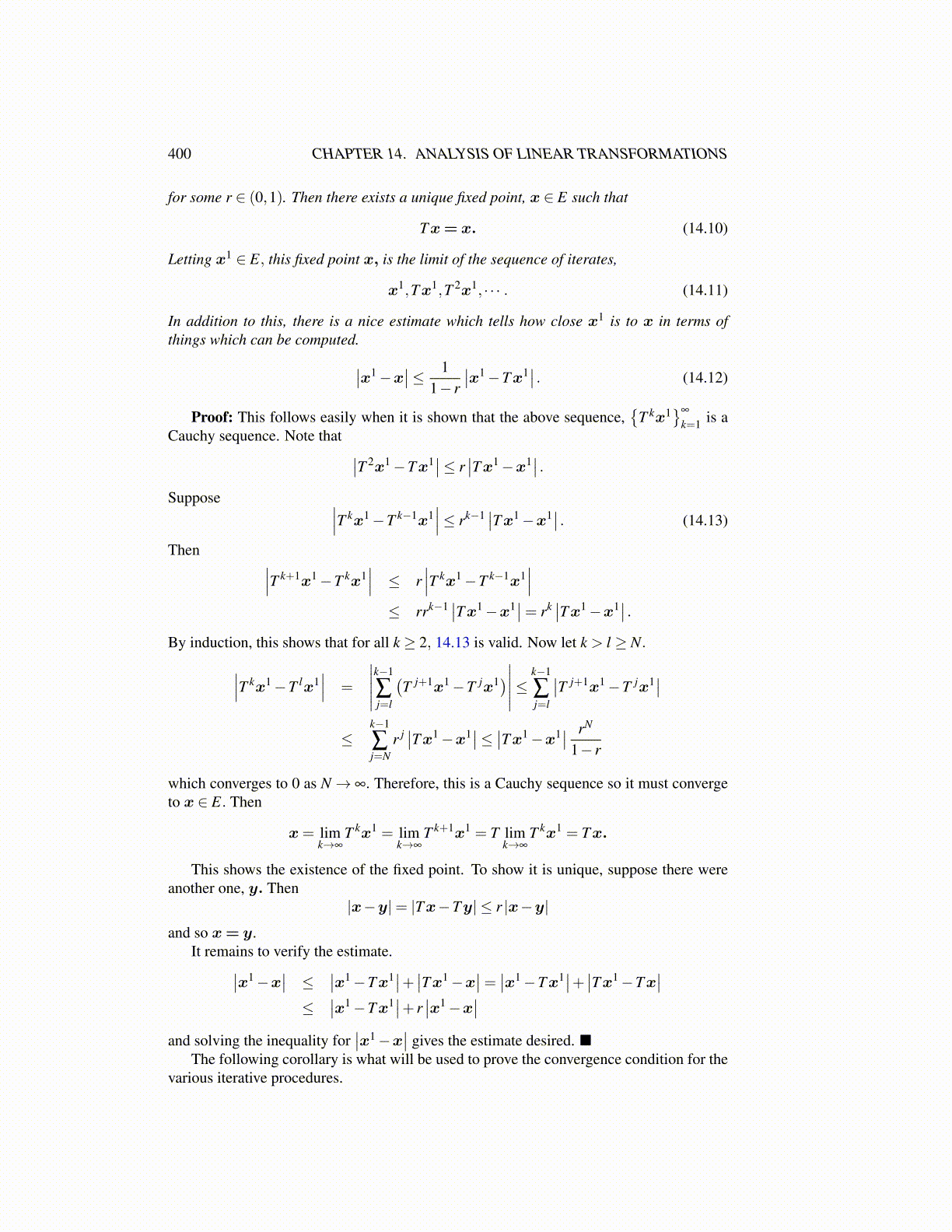
400 CHAPTER 14. ANALYSIS OF LINEAR TRANSFORMATIONS
for some r ∈ (0,1). Then there exists a unique fixed point, x ∈ E such that
Tx= x. (14.10)
Letting x1 ∈ E, this fixed point x, is the limit of the sequence of iterates,
x1,Tx1,T 2x1, · · · . (14.11)
In addition to this, there is a nice estimate which tells how close x1 is to x in terms ofthings which can be computed.∣∣x1−x
∣∣≤ 11− r
∣∣x1−Tx1∣∣ . (14.12)
Proof: This follows easily when it is shown that the above sequence,{
T kx1}∞
k=1 is aCauchy sequence. Note that ∣∣T 2x1−Tx1∣∣≤ r
∣∣Tx1−x1∣∣ .Suppose ∣∣∣T kx1−T k−1x1
∣∣∣≤ rk−1 ∣∣Tx1−x1∣∣ . (14.13)
Then ∣∣∣T k+1x1−T kx1∣∣∣ ≤ r
∣∣∣T kx1−T k−1x1∣∣∣
≤ rrk−1 ∣∣Tx1−x1∣∣= rk ∣∣Tx1−x1∣∣ .By induction, this shows that for all k ≥ 2, 14.13 is valid. Now let k > l ≥ N.∣∣∣T kx1−T lx1
∣∣∣ =
∣∣∣∣∣k−1
∑j=l
(T j+1x1−T jx1)∣∣∣∣∣≤ k−1
∑j=l
∣∣T j+1x1−T jx1∣∣≤
k−1
∑j=N
r j ∣∣Tx1−x1∣∣≤ ∣∣Tx1−x1∣∣ rN
1− r
which converges to 0 as N→ ∞. Therefore, this is a Cauchy sequence so it must convergeto x ∈ E. Then
x= limk→∞
T kx1 = limk→∞
T k+1x1 = T limk→∞
T kx1 = Tx.
This shows the existence of the fixed point. To show it is unique, suppose there wereanother one, y. Then
|x−y|= |Tx−Ty| ≤ r |x−y|and so x= y.
It remains to verify the estimate.∣∣x1−x∣∣ ≤ ∣∣x1−Tx1∣∣+ ∣∣Tx1−x
∣∣= ∣∣x1−Tx1∣∣+ ∣∣Tx1−Tx∣∣
≤∣∣x1−Tx1∣∣+ r
∣∣x1−x∣∣
and solving the inequality for∣∣x1−x
∣∣ gives the estimate desired. ■The following corollary is what will be used to prove the convergence condition for the
various iterative procedures.